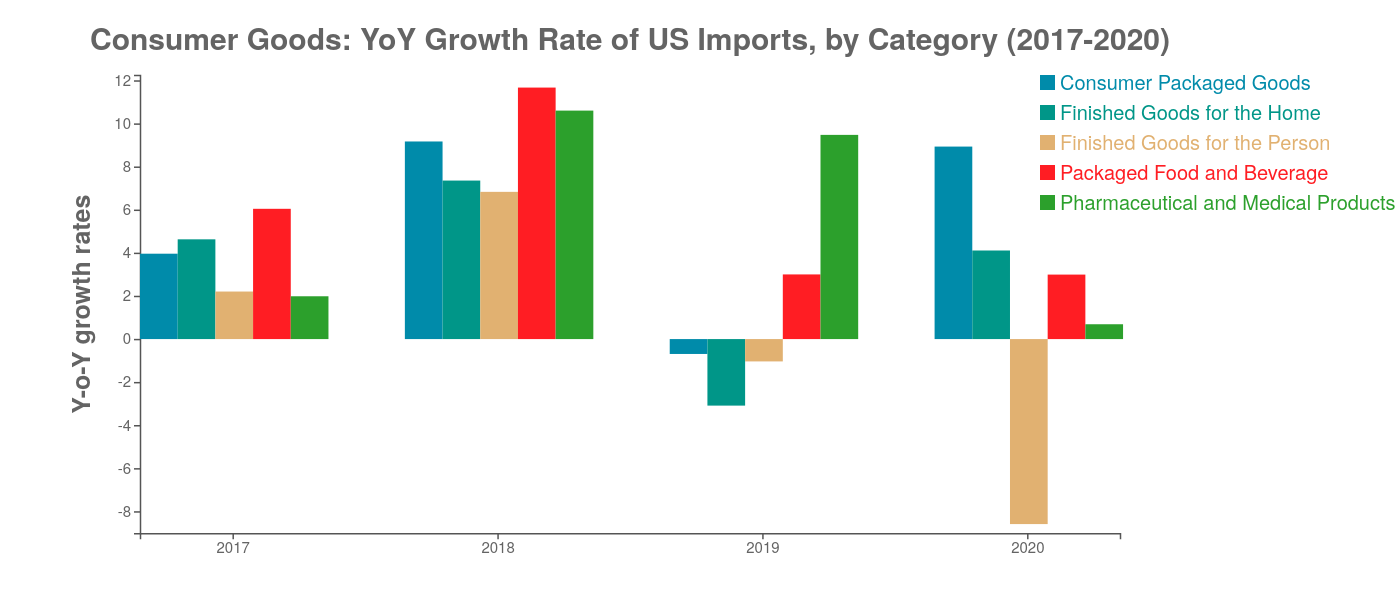Consumption Patterns in the Aftermath of Covid-19
Trade data show differences in US import performance as changes in consumption unfold
Pubblicato da Lorenzo Fontanelli. .
United States of America Total goods SME Import Global Economic Trends
In today’s rapidly evolving marketplace environment, several factors may alter consumer behaviours. A year after the novel coronavirus was first detected in the United States, the Covid-19 crisis continues to drastically affect Americans’ lives and livelihoods. Indeed, the extent and duration of restrictions have forced people to give up some of their most deeply ingrained habits. Whilst consumers react to the emergency in different ways, permanent changes in consumption are emerging.
For companies to stay abreast of this “new normal”, tracking sales alone won’t be enough. They should also regularly conduct careful analysis of the unfolding trends in consumer behaviours, with the aim of finding new ways to best meet people’s needs. International trade data is, to this extent, a key tool to measure how much the Covid-19 pandemic is reshaping US demand for consumer goods.
In 2020 - according to the latest Export Planning data - American imports of consumer goods posted the largest overall drop in 10-years time, falling 1.63% with respect to the previous year.
To get a comprehensive picture of the fast-evolving consumption patterns, we should focus, however, on the different sectors which actually make up the consumer goods industry. These can be grouped into five main categories: consumer packaged goods, finished goods for the home, finished goods for the person, packaged food and beverage and pharmaceutical and medical products.
The graph below shows the year-over-year growth rate of US consumer goods’ imports between 2017 and 2020. Although 2020 has presented unprecedented challenges, it is somewhat evident that four out of five categories found themselves to be particularly resilient amidst the extraordinary circumstances. Whereas purchases of consumer packaged goods, finished goods for the home and packaged food and beverage increased respectively by 8.9%, 4.1% and 3%, pharmaceutical and medical products signal slighter YoY growth (+0.7% compared to 2019). Yet the category which went through the sharpest contraction consists of finished goods for the person: after declining by nearly 1% in 2019, imports of this kind of products have plunged 8.5% in the last year.

Source: ExportPlanning elaborations
To properly identify customer needs we need to ask whether the effects of the pandemic are likely to continue through 2021. As a matter of fact, there is significant variance in how American consumers are responding to the crisis and adapting to the “next normal”. Importantly, their sentiment and behaviour varies greatly from one product to another. As illustrated in the following graph, the demand for certain consumer goods has registered positive growth in 2021-Q1. In particular, finished products for the house records the largest YoY increase with respect to 2019-Q1, as imports of consumer electronics, home appliances and furniture and mattresses grew respectively by 34.5%, 34% and 22%. This confirms the increasing appetite for purchases related to home nesting. Similarly, pharmaceuticals and medical products score quite well: imports of drugs (+19.8%), medical and dental instruments (+18%) and electro-medical equipment (+3.4%) signal positive growth rates, whilst syringes, prostheses and other products for healthcare (-3%) are still firmly into negative territory. As to finished goods for the person, 2021 has started off on the same tone that 2020 ended, with YoY growth rate of outerwear, footwear and underwear dropping below -20%. Notwithstanding the category’s poor performance, imports have increased for personal items (+3.4%), with increasing demand mainly explained by trade of toys. That is even more evident for jewellery and watches (+24.5%), though this trend may require further investigation.
Source: Export Planning elaborations
Conclusions
The Covid-19 crisis has changed people’s routines at unprecedented speed—and some of those changes will outlast the pandemic. The health emergency has placed severe strains on the global consumer goods industry. As a result, the demand for this kind of products may be characterized by high variability for some time to come. Though imports of several finished goods for the person still not caught up with 2019 values, other categories seem to be on the right track. Understanding new consumers’ needs will be no simple matter for firms. Those who get it right, however, stand to earn tremendous competitive advantage.


